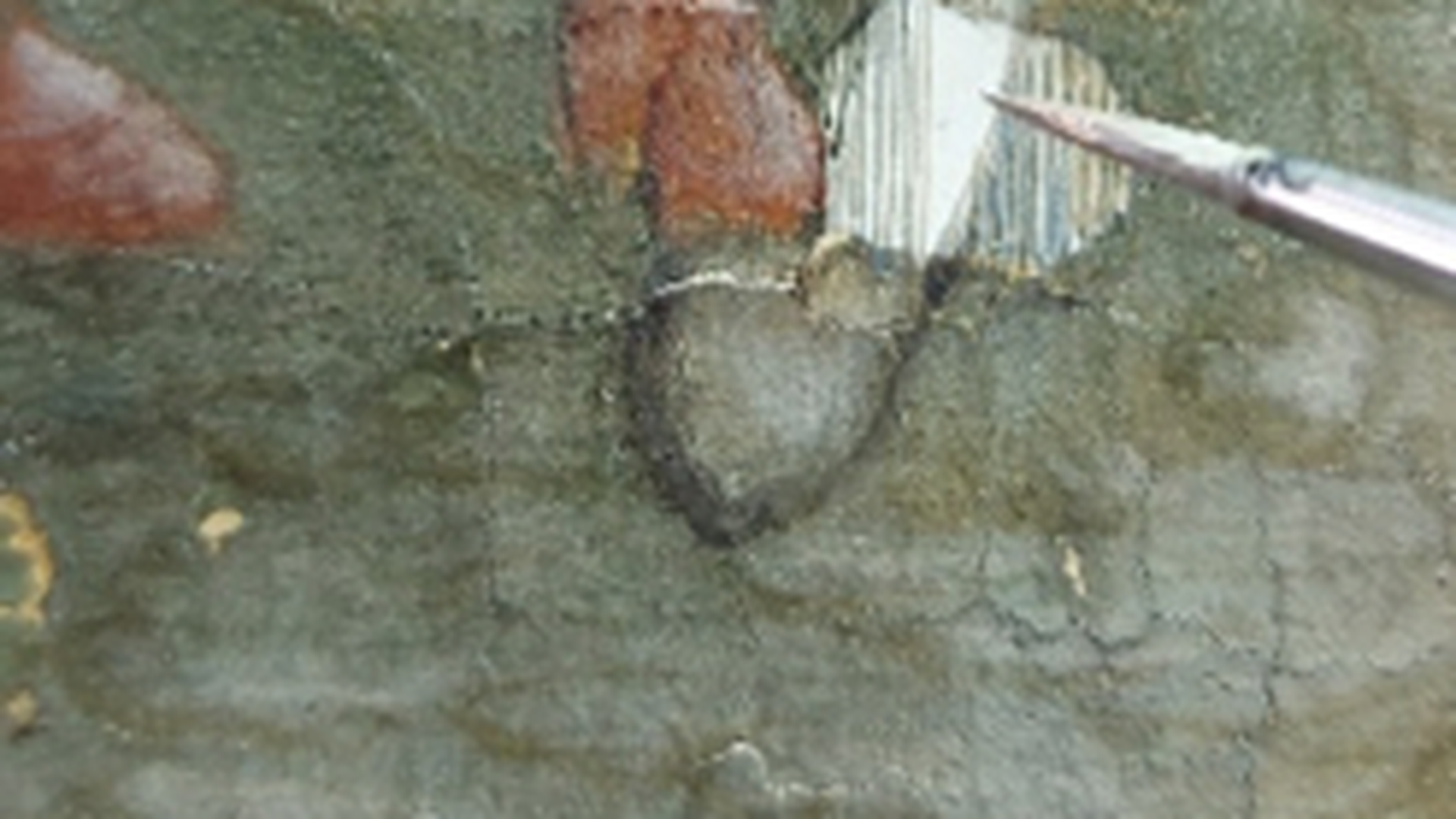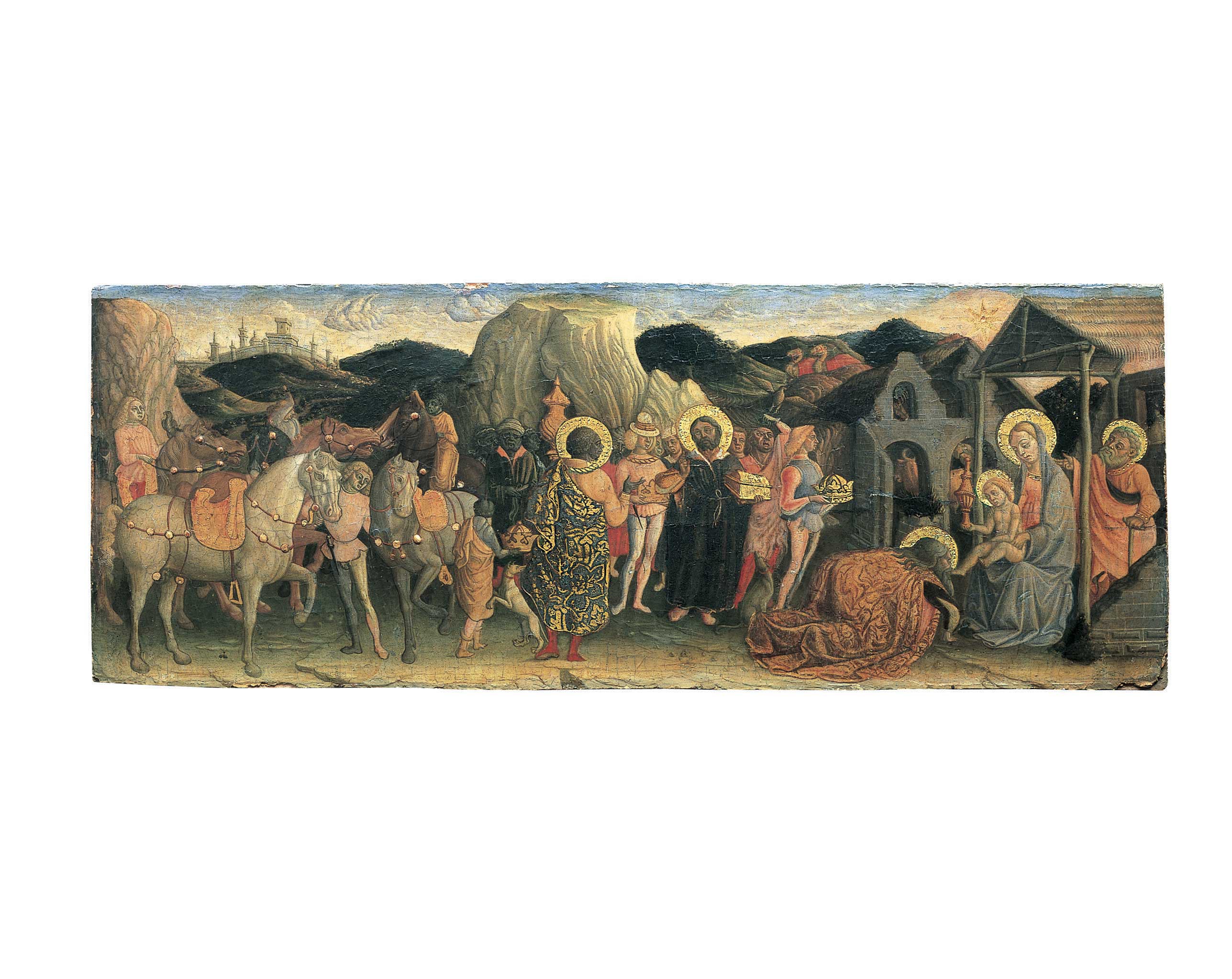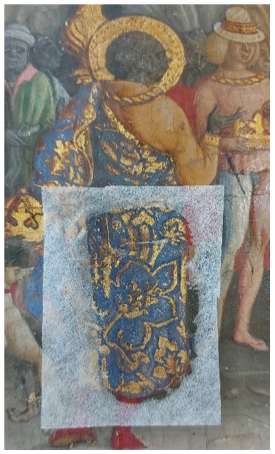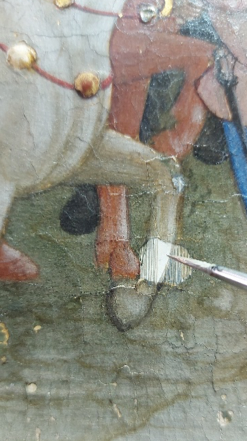Adoration of the Magi
Artist: Ludovico Urbani
Date: 1477
Classification: Painting
Dimensions: 25 x 65 cm
Materials: Tempera on wood
Adopted By: The New York Chapter
Total Cost: € 30,000
Description
The panel dates back to 1477 and recalls the style of the master Niccolò di Liberatore, called L’Alunno. The painter of the panel, San Severino Marche Ludovico Urbani (1460-1493 ca.), presumably created this as a compartment of a predella. The activities in the city of its origin, and the style of the two brothers, Iacopo and Lorenzo Salimbeni, influenced the artist’s style. This artwork represents the charm of the first Florentine Renaissance and the Venetian Carlo Crivelli, who was permanently in the Marche region in 1468. Federico Zeri hypothesized that the Adoration of the Magi is part of a triptych. It was possibly part of the Madonna with the Child Enthroned and Angels (Avignon, Musée du Petit Palais) and the two panels with Saint Francis and Saint Louis of Toulouse (Recanati, Diocesan Museum).
State of Preservation
The painted panel is on a single horizontally arranged poplar wood board and measures 26 x 65 cm. On the back, there is no containment system, and there are small central cracks. The panel presents anchors fixed directly to the support on the back by screws.
Restoration Procedures
A preliminary study of the various elements will take place before the restoration and will allow for the correct placement of each portion. Afterward, restorers will apply an anoxic treatment with a brush that contains permethrin-based products. They will also treat iron elements with the appropriate products and replace them with new ones if necessary. Once the restoration is completed, all elements will be reassembled. The entire restoration process and assembly will be documented.
Detail
Adopted By:
The New York ChapterPatrons:
"Adopted in loving memory of Camillo and Florence D'Urso" by Ms. Donna D’Urso
Inventory N°: 40261
Artist: Ludovico Urbani
Date: 1477
Dimensions: 25 x 65 cm
Materials: Tempera on wood
Department:
XV-XVI Century ArtCurators:
Dr. Fabrizio Biferalimuseum:
PinacotecaLaboratories:
Painting & WoodWishbook year: 2021
Total Cost
€ 30,000
Adoration of the Magi - Final Restoration Report

The panel was subject to an anoxic treatment and an accurate scientific analysis. The designs for the images in high resolution asserted the effective conservation state and executed technique. The infrared reflectography at 1900 nm assisted in the identification of the preparatory drawing, which demonstrated that there were no evident volumetric shifts during the pictorial drafting. The artist faithfully respected the design. Only minor variations are detectable in some details, like the creation of the little wall in the landscape behind the architecture and the white horse's tail.
The execution of the first cleaning tests presented the necessity for additional analysis. The tests also targeted the recognition of the used pigments, which allowed an investigation of the deepest layers of the artwork. There were effective analyses in XRF fluorescence and Raman, which obtained a map of every single chemical element present in the different backgrounds. At the end of the investigations, the restorers discussed the obtained data and they could complete the cleaning phase with greater clarity. They recovered the tonal harmony of the pictorial layering and the many details concealed by previous repaintings and/or plasterings. The intervention will allow further comparative studies with other works by the same author to define with greater certainty its affiliation.
The applied methodology included several stages, even a delicate restoration of the wooden support:
- Pre-Consolidation with infiltration
- Wood Renovation: removal of the attachment system, insertion of wedges in all cracks
- Removal of the drops of wax on the pictorial surface
- Cleaning of the chromatic surface for the removal of the altered varnish and previous retouches with suitable solvents, tested with cognitive micro-assays
- Consolidation of the pigment with the use of Japanese paper and Alga Funori
- Revision of the previous grouts
- Grouting of the gaps with rabbit skin glue gesso
- Color reintegration of the gaps with Gamblin restoration paint and/or Winsor and Newton watercolors
- Final protective coating
The intervention was documented with an accurate photographic campaign. At the end of the intervention, the work was placed in a Clima-Frame (Propadyn Museart), a dynamic, bio-compatible, moisture stabilizer, into a prepared compartment to safeguard the artwork. The Clima-Frame compensates for changes in humidity and ensures ideal conditions in every exhibition environment.
Restoration Update - Adoration of the Magi

The results obtained during the first cleaning allowed restorers to confirm a methodology of intervention aimed at the punctual removal of non-original altered paint and all previous retouches. Once they finished the cleaning phase, they recovered the original color index of the pigments and some details in the artist's pictorial drafting. Subsequently, they continued filling in the gaps. Presently, they are retouching the holes with a cross-hatching method, and performing minor glazing in the slightly abraded areas.
On the support, restorers performed anoxic treatment, disassembled the attachment system, consolidated the wood, and inserted wedges in all the cracks. A new "clima frame" will ensure a constant humidity level. Also, restorers will construct a new wall attachment system.

Adoration of the Magi

Details
Adopted by: The New York Chapter
Patrons: "Adopted in loving memory of Camillo and Florence D'Urso" by Ms. Donna D’Urso
Inventory: 40261
Artist: Ludovico Urbani
Date: 1477
Classification: Painting
Materials: Tempera on wood
Dimensions: 25 x 65 cm
Museum: Pinacoteca
Department: XV-XVI Century Art
Laboratory: Painting & Wood
Wishbook year: 2021
Description
The panel dates back to 1477 and recalls the style of the master Niccolò di Liberatore, called L’Alunno. The painter of the panel, San Severino Marche Ludovico Urbani (1460-1493 ca.), presumably created this as a compartment of a predella. The activities in the city of its origin, and the style of the two brothers, Iacopo and Lorenzo Salimbeni, influenced the artist’s style. This artwork represents the charm of the first Florentine Renaissance and the Venetian Carlo Crivelli, who was permanently in the Marche region in 1468. Federico Zeri hypothesized that the Adoration of the Magi is part of a triptych. It was possibly part of the Madonna with the Child Enthroned and Angels (Avignon, Musée du Petit Palais) and the two panels with Saint Francis and Saint Louis of Toulouse (Recanati, Diocesan Museum).
State of Preservation
The painted panel is on a single horizontally arranged poplar wood board and measures 26 x 65 cm. On the back, there is no containment system, and there are small central cracks. The panel presents anchors fixed directly to the support on the back by screws.
Restoration Procedures
A preliminary study of the various elements will take place before the restoration and will allow for the correct placement of each portion. Afterward, restorers will apply an anoxic treatment with a brush that contains permethrin-based products. They will also treat iron elements with the appropriate products and replace them with new ones if necessary. Once the restoration is completed, all elements will be reassembled. The entire restoration process and assembly will be documented.
Media

Adoration of the Magi
Restorations Update: Adoration of the Magi - Final Restoration Report

The panel was subject to an anoxic treatment and an accurate scientific analysis. The designs for the images in high resolution asserted the effective conservation state and executed technique. The infrared reflectography at 1900 nm assisted in the identification of the preparatory drawing, which demonstrated that there were no evident volumetric shifts during the pictorial drafting. The artist faithfully respected the design. Only minor variations are detectable in some details, like the creation of the little wall in the landscape behind the architecture and the white horse's tail.
The execution of the first cleaning tests presented the necessity for additional analysis. The tests also targeted the recognition of the used pigments, which allowed an investigation of the deepest layers of the artwork. There were effective analyses in XRF fluorescence and Raman, which obtained a map of every single chemical element present in the different backgrounds. At the end of the investigations, the restorers discussed the obtained data and they could complete the cleaning phase with greater clarity. They recovered the tonal harmony of the pictorial layering and the many details concealed by previous repaintings and/or plasterings. The intervention will allow further comparative studies with other works by the same author to define with greater certainty its affiliation.
The applied methodology included several stages, even a delicate restoration of the wooden support:
- Pre-Consolidation with infiltration
- Wood Renovation: removal of the attachment system, insertion of wedges in all cracks
- Removal of the drops of wax on the pictorial surface
- Cleaning of the chromatic surface for the removal of the altered varnish and previous retouches with suitable solvents, tested with cognitive micro-assays
- Consolidation of the pigment with the use of Japanese paper and Alga Funori
- Revision of the previous grouts
- Grouting of the gaps with rabbit skin glue gesso
- Color reintegration of the gaps with Gamblin restoration paint and/or Winsor and Newton watercolors
- Final protective coating
The intervention was documented with an accurate photographic campaign. At the end of the intervention, the work was placed in a Clima-Frame (Propadyn Museart), a dynamic, bio-compatible, moisture stabilizer, into a prepared compartment to safeguard the artwork. The Clima-Frame compensates for changes in humidity and ensures ideal conditions in every exhibition environment.
Restorations Update: Restoration Update - Adoration of the Magi

The results obtained during the first cleaning allowed restorers to confirm a methodology of intervention aimed at the punctual removal of non-original altered paint and all previous retouches. Once they finished the cleaning phase, they recovered the original color index of the pigments and some details in the artist's pictorial drafting. Subsequently, they continued filling in the gaps. Presently, they are retouching the holes with a cross-hatching method, and performing minor glazing in the slightly abraded areas.
On the support, restorers performed anoxic treatment, disassembled the attachment system, consolidated the wood, and inserted wedges in all the cracks. A new "clima frame" will ensure a constant humidity level. Also, restorers will construct a new wall attachment system.

© 2026 Patrons of the Arts
in the Vatican Museums
Vatican Museums V-00120,
Vatican City State (Europe)
+39 0669864499
